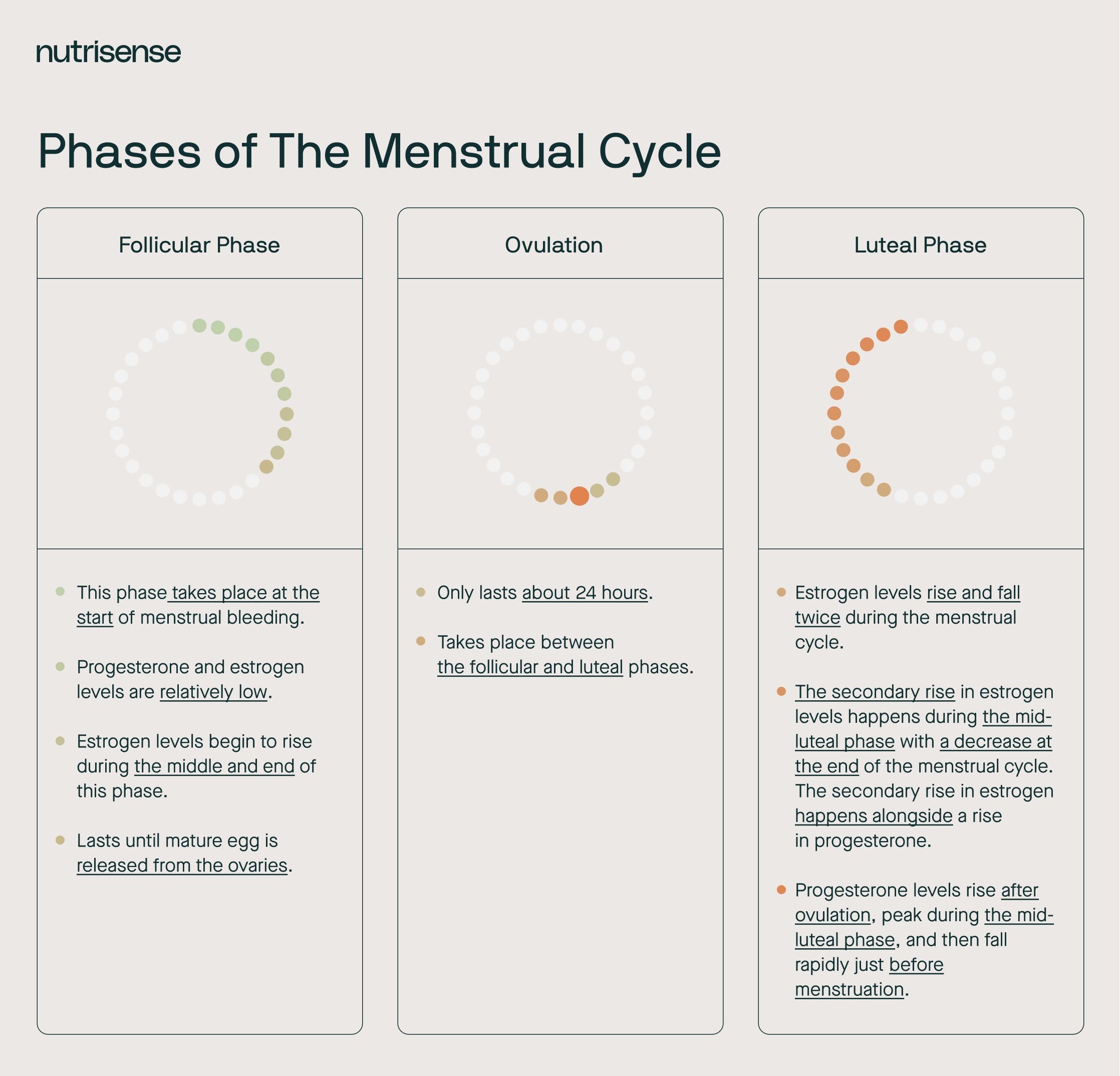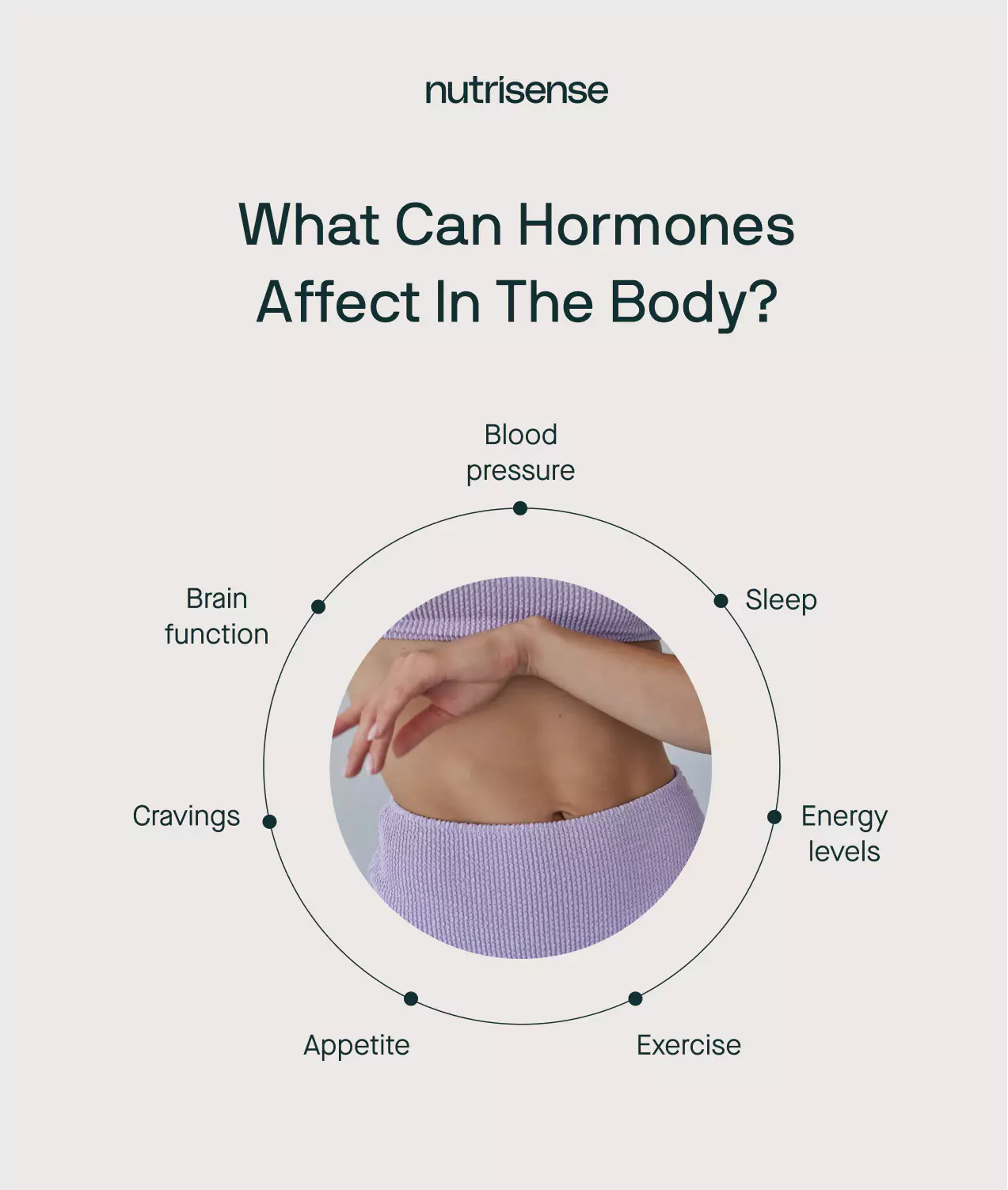What if there was a new way to balance your hormones and reduce some of the side effects that come with menstruation? When it comes to women’s health, the menstrual cycle can have a bigger impact on daily life than you may realize.
This is where cycle syncing comes in. The premise of cycle syncing involves tailoring your workouts and dietary habits according to where you are in your menstrual cycle.
Many of the changes in mood, skin, sex drive, and energy levels that occur through the month are due to the hormonal shifts that take place during the menstrual cycle. Can doing certain activities at specific times of the month really help you feel more energized, have fewer mood swings, and more effective workouts?
By the end of this article, you’ll know about the basics of an idea called cycle syncing and why some people believe that this lifestyle can improve your wellbeing.
The Menstrual Cycle Phases

As we shared in our article on period weight gain, your body has two main menstrual phases called the follicular phase and the luteal phase. The ovulatory phase falls right in between these two phases, and lasts only about 24 hours.
Estrogen, progesterone, luteinizing hormone, and follicular stimulating hormone are just a few of the hormones involved in your menstrual cycle. During menstruation, your body sheds its uterine lining.
This occurs at the beginning of your menstrual cycle. The length of the menstrual cycle is usually between 25 and 30 days, but it may be longer or shorter for some people.
What is the Cycle Syncing Philosophy?

Cycle syncing is a term coined and trademarked by Alisa Vitti, Functional Nutritionist, HHC, AADP in her book Womancode. According to Alissa, cycle syncing is the process of aligning our lifestyle with the specific phase of our menstrual cycle.
It begins with familiarizing yourself with the different phases of your menstrual and hormonal cycle, then tailoring your diet, physical activity, supplement intake, and lifestyle choices to the strengths, weaknesses, and needs of each phase of your cycle.
Cycle syncing involves:
- Choosing specific foods to support hormonal balance in each phase of your cycle
- Taking supplements to support hormonal health and combat hormonal symptoms like PMS, acne, bloating, and fatigue
- Planning cardio, strength training, and HIIT workouts in sync with your cycle
- Planning your schedule and activities around the phases of your cycle
- Tailoring your approach to motherhood, relationships, and sex to the phases of your menstrual cycle
Cycle Syncing Science: Is There Enough Evidence?
Cycle syncing is said to improve your hormonal balance, helping you feel more energized, experience fewer mood swings, have more effective workouts, and even help with conception. However, cycle syncing is a very new concept, so research about the effectiveness of this method is still ongoing and very limited.
While we know that diet and lifestyle factors do impact hormone levels and menstrual symptoms such as PMS, there’s not yet enough evidence from high-quality randomized controlled trials to suggest specific cycle syncing protocols.
Individual responses to foods, exercise, and lifestyle changes can vary greatly. Similarly, the menstrual cycle is not the same for everyone. For example, people with conditions like PCOS and endometriosis may experience irregular cycles.
Cycle Syncing Workouts
The research on cycle syncing workouts in particular is lacking. Tailoring your workouts to your specific menstrual cycle phase is proposed by some to help support improved hormone balance. This, they say, can lead to reduced negative hormone-related symptoms through the month such as fatigue and mood swings.
There is some evidence suggesting that certain phases of your menstrual cycle may be optimal for different types of exercise. Unfortunately, there’s currently no evidence showing cycle syncing has any significant benefits.
The Impact of Hormones: What We Know

While research does not yet necessarily back up the cycle syncing method at this time, scientists do know that your hormones can impact different bodily functions. Here are a few of the ways that your menstrual hormones may impact you.
Hormones and Brain Function
The hormones that control the menstrual cycle may have an influence on several areas of brain function, including cognition, emotional status, sensory processing, and appetite. Studies show that estrogen can influence the hypothalamus and the hippocampus in the brain.
These are involved in emotions, perception, memory, and the processing of sensory information. Estrogen also influences the brainstem and neocortex, which are involved in motor function, language, emotional and sensory information, and consciousness.
Menopause, which signals the end of your menstrual cycle, is often accompanied by changes in these cognitive functions as a result of changing estrogen levels.
Hormones and Exercise

Studies show that hormones may also have an impact on exercise performance, particularly during the early follicular phase. This may be due to the effects of estrogen, which has a role in building muscle, regulating substrate metabolism, influencing inflammation, and may have neuroexcitatory effects.
When estrogen rises, it may affect our muscles and exercise performance, especially in high-intensity workouts. However, more high-quality research and evidence is needed to confirm these findings and establish a connection.
Changes in sex hormone levels may also influence how our bodies use different nutrients during exercise. These hormones may mediate some aspects of carbohydrate and fat metabolism during different phases in the menstrual cycle, and our metabolism of these nutrients greatly affects our ability to produce energy during exercise.
More research is needed to determine exactly how our hormones influence our metabolism and energy production, and whether or not this affects a significant portion of the menstruating population.
Hormones and Cravings

Having your period may be associated with increased food cravings for good reason. Studies show that people in the premenstrual phase crave more carbohydrates, particular people who experience PMS.
This may be due to fluctuations in your body’s energy intake during different phases of the menstrual cycle. One study found that, during the luteal phase, women with higher estradiol reported consuming more carbohydrate-rich foods.
Women with higher progesterone during the luteal phase reported increased cravings for sugary beverages.
Changes in basal metabolic rate throughout the menstrual cycle also take place. Some studies show that metabolic rate (and caloric needs) may increase in the luteal phase, perhaps impacting cravings.
Hormones and Energy Levels
Some phases of the menstrual cycle are commonly associated with fatigue. A recent 2020 study compared self-reported physical and mental fatigue in the early-follicular and mid-luteal phases of 18 women with generalized anxiety disorder (GAD) and 20 women without anxiety.
Researchers found that mental fatigue in the non-anxious group increased to levels experienced by the GAD group during the mid-luteal phase, when they experience a higher level of estrogen and progesterone.
Hormones and Sleep
The hormones involved in your menstrual cycle may affect your quality of sleep. One study of 579 menstruating women found that an irregular menstrual cycle with heavier bleeding was associated with shorter sleep duration, poor sleep quality, fatigue, stress, and depression.
Interestingly, a hormonal imbalance is a possible cause of irregular, heavy bleeding during the menstrual cycle.


